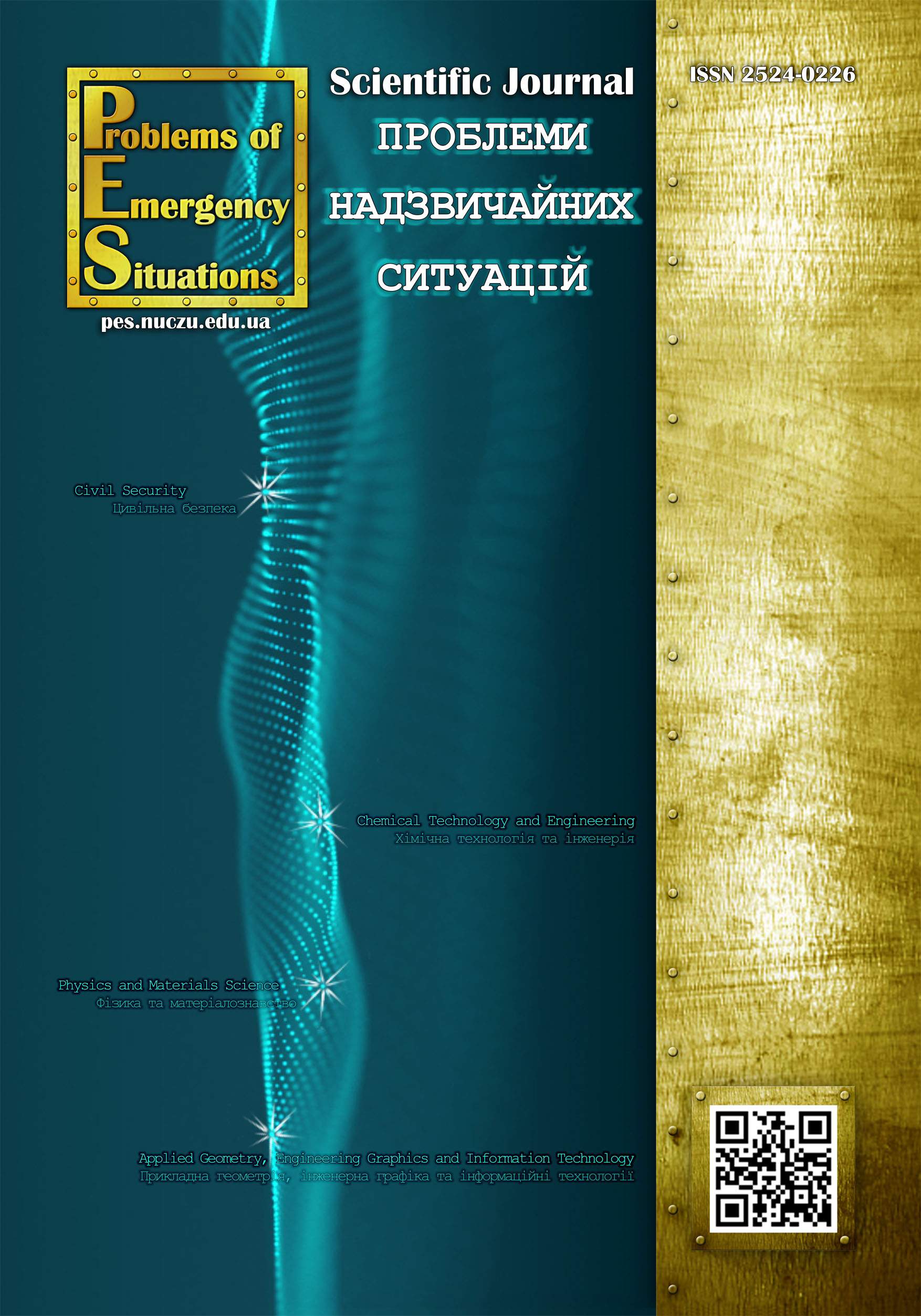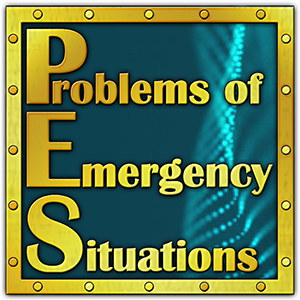Software implementation of assessment of buildings' resistance to progressive collapse
Maiboroda Roman
National University of Civil Protection of Ukraine
http://orcid.org/0000-0002-3461-2959
Otrosh Yurii
National University of Civil Protection of Ukraine
http://orcid.org/0000-0003-0698-2888
DOI: https://doi.org/10.52363/2524-0226-2025-41-12
Keywords: progressive collapse, fire, explosion, LIRA–SAPR, computer model, load combination
Аnnotation
A computer model has been developed that allows assessing the resistance of a reinforced concrete monolithic building to progressive collapse under the influence of the combined action of fire and internal deflagration explosion. For this purpose, a spatial physically and geometrically nonlinear model of a six-story industrial building was created. The model takes into account the combined operation of load-bearing structures, changes in the thermophysical and mechanical properties of materials under the influence of elevated temperatures, the formation of local destruction, redistribution of internal forces and dynamic effects from explosive loading. The model is implemented in the LIRA-SAPR software package using the “thermal conductivity” module to take into account the temperature effect of a standard fire regime lasting 60 minutes and the “dynamics in time” settings to simulate an impulse load from an explosion of 15 kPa. As a result of the modeling, it was established that the isolated action of a fire leads to an increase in the deflections of the floor slabs by 2.6 times, and an internal explosion leads to an increase in the deflection of the bottom slab by 5.2 times relative to the normal state. The greatest danger is the scenario of the combined impact of fire and explosion, in which the deflection of the lower plate reached 55.8 mm, which exceeds the initial value by 8.3 times. Such deformations, when combined, can potentially cause the loss of the load-bearing capacity of structures and the development of progressive collapse of the building. The results obtained form the basis for increasing the level of structural safety of buildings and reducing the risk of loss of human lives in emergency situations. The proposed approach provides the possibility of a comprehensive assessment of the resistance of reinforced concrete monolithic buildings to progressive collapse under the combined action of thermal and explosive loads, as well as the justification and implementation of effective measures to increase their reliability and survivability.
References
- Otrosh, Yu., Maiboroda, R., Romin, A. (2023). Doslidzhennia metodyk rozrakhunku prohresuiuchoho obvalennia. Mekhanika ta matematychni metody, 2, 25–40. doi: 10.31650/2618–0650–2023–5–2–25–40
- Skob, Y., Dreval, Y., Vasilchenko, A., Maiboroda, R. (2023). Selection of Material and Thickness of the Protective Wall in the Conditions of a Hydrogen Explosion of Various Power. Key Engineering Materials, 952, 121–129. doi: 10.4028/p–ST1VeT
- Maiboroda, R., Zhuravskij, M., Otrosh, Yu., Karpuntsov, V. (2024). Determination of the Required Area of Easily Removable Structures to Protect Against Progressive Collapse. Key Engineering Materials, 1004, 73–83. doi: 10.4028/p–V0xA6H
- Tanapornraweekit, G., Haritos, N., Mendis, P. (2011). Behavior of FRP–RC plates under multiple independent air blasts. Journal of Performance of Constructed Facilities, 25(2), 433–440. doi: 10.1061/(ASCE)CF.1943–5509.0000191
- Liu, Y., Yan, J., Huang, F. (2018). Behavior of reinforced concrete beams and columns subjected to blast loading. Defense Technology, 14(5), 550–559. doi: 10.1016/j.dt.2018.07.026
- DSTU–N B EN 1991–1–7:2010. Yevrokod 1. Dii na konstruktsii. Chastyna 1–7. Zahalni dii. Osoblyvi dynamichni vplyvy. Chynnyi vid 01.07.2013 r. Vyd. ofits. Kyiv : Tekhnichnyi komitet standartyzatsii «Metalobudivnytstvo», 81
- DSTU–N B EN 1990:2008. Yevrokod. Osnovy proiektuvannia konstruktsii. Chynnyi vid 01.07.2009 r. Vyd. ofits. Kyiv : Tekhnichnyi komitet z standartyzatsii «Armatura dlia zalizobetonnykh konstruktsii», 105.
- Shan, S., Wang, H., Li, S., Wang, B. (2023). Evaluation of progressive collapse resistances of RC frame with contributions of beam, slab and infill wall. Structures, 53, 1463–1475. doi: 10.1016/j.istruc.2023.04.114
- Biloshitska, N., Biloshitsky, M., Tatarchenko, Z., Dyachuk, B. (2022). Mathematical modeling of building structures in complex conditions of chemical production. Urban planning and territorial planning, 81, 59–69. doi: 10.32347/2076–815x.2022.81.59–69
- Almusallam, T., Elsanadedy, H., Abbas, H., Alsayed, S., Al–Salloum, Y. (2010). Progressive collapse analysis of a RC building subjected to blast loads. Structural Engineering and Mechanics, 36(3), 301–319. doi: 10.12989/SEM.2010.36.3.301
- Ding, Y., Chen, Y., Shi, Y. (2016). Progressive collapse analysis of a steel frame subjected to confined explosion and post–explosion fire. Advances in Structural Engineering, 19(11), 1780–1796. doi:10.1177/1369433216649381
- Jahromi, H., Izzuddin, B., Nethercot D. (2012). Robustness assessment of building structures under explosion. Buildings, 2(4), 497–518. doi: 10.3390/buildings2040497
- Luccioni, B., Ambrosini, R., Danesi, R. (2004). Analysis of building collapse under blast loads. Engineering Structures, 26(1), 63–71. doi: 10.1016/j.engstruct.2003.08.011
- Maiboroda, R., Otrosh, Yu. (2023). Doslidzhennia metodyky rozrakhunku stiikosti do prohresuiuchoho obvalennia budivel vnaslidok pozhezhi ta vybukhu. Komunalne hospodarstvo mist: nauk.–tekhn. zb. Seriia: Tekhnichni nauky ta arkhitektura, 3(191), 115–127. doi: 10.31650/2618–0650–2023–5–2–25–40
- DSTU 9294:2024. Rozrakhunok budivel na stiikist do prohresuiuchoho (neproportsiinoho) obvalennia. Chynnyi vid 01.03.2025 r. Vyd. ofits. Kyiv : Tekhnichnyi komitet standartyzatsii «Zakhyst budivel ta sporud», Derzhavne pidpryiemstvo «Derzhavnyi naukovo–doslidnyi instytut budivelnykh konstruktsii», 70.
- DSTU 9176:2022. Pozhezhna bezpeka. Metody vyznachennia parametriv lehkoskydnykh konstruktsii dlia prymishchen ta budynkiv. Osnovni polozhennia. Kyiv : Tekhnichnyi komitet standartyzatsii «Pozhezhna bezpeka ta protypozhezhna tekhnika», 23.
- DSTU–N B EN 1991–1–7:2010. Yevrokod 1. Dii na konstruktsii. Chastyna 1–7. Zahalni dii. Osoblyvi dynamichni vplyvy. Kyiv : Tekhnichnyi komitet standartyzatsii «Metalobudivnytstvo», 100.
- DSTU B V.1.1–36:2016. Vyznachennia katehorii prymishchen, budynkiv ta zovnishnikh ustanovok za vybukhopozhezhnoiu ta pozhezhnoiu nebezpekoiu. Kyiv : UkrNDITsZ, 34.














